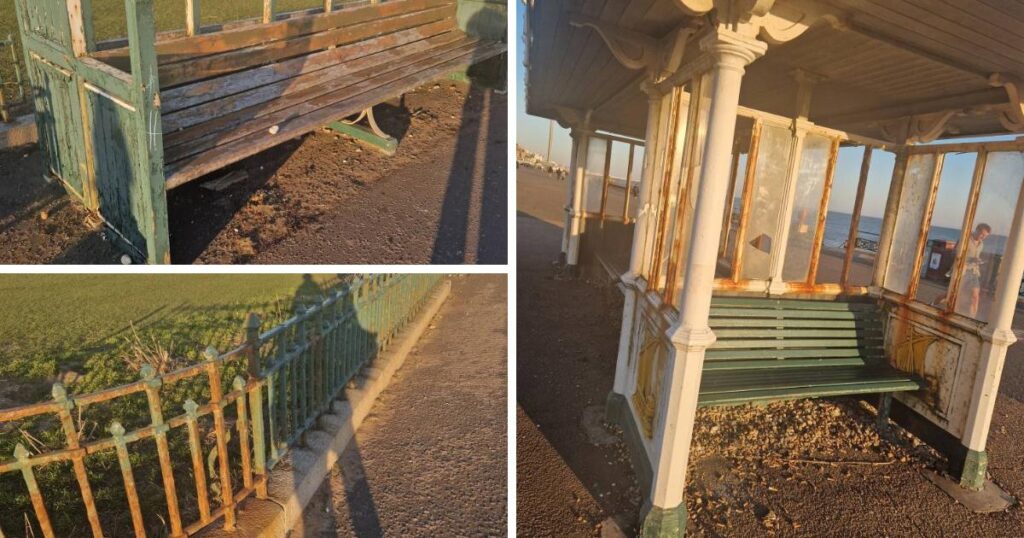Lucy De Angeles paid the island city a visit on Saturday, March 8, and was impressed by the condition of the freshly-painted shelters along Southsea seafront.
But the next day, while walking along the promenade on Hove seafront, she was confronted by rusty railings, worn benches and shelters with smashed-in windows.
It prompted her to wonder if Brighton should be renamed “Rusty Brighton” – and to slam the council for not better maintaining the seafront.
She said: “I would be ashamed if I was walking here, as I did yesterday, with visitors.”
Meanwhile, she said Portsmouth – the former home of the Royal Navy with historic ships including the HMS Victory and King Henry VIII’s ship the Mary Rose – had “a completely different attitude to respecting their heritage”.
“What is going on with the council?”, she said. “They aren’t fit for purpose.”
In response, Jacob Taylor, deputy leader of Brighton & Hove City Council, said the authority knew that there were “parts of the seafront in need of attention”.
He said the council was investing in the seafront, launching a development board and securing millions of pounds of funding.
This has been closed to the public since 2012 as the structure became degraded by the marine environment and became unsafe.
Work to restore the landmark back to its former glory began in November, after years of campaigning.
Phase one of the project is due to be completed by summer 2026 and will see 28 of the 151 ornate arches and bays restored and a new, fully accessible lift installed.
In an interview with The Argus in February, he said a particular focus would be developing “the area between the pier and Brighton Marina, which is undeveloped and in-need of a bit more attention, but it has potential for the Brighton ‘vibe’”.
Councillor Jacob Taylor, deputy leader and cabinet member for finance and city regeneration, said: “The seafront is our city’s shop window and a vital part of what makes Brighton & Hove the fantastic place it is.
“That is why we have invested in Hove Beach Park, Madeira Terrace, Black Rock, the Reading Room, the Temple, and launched our seafront development board.
“We know there are parts of the seafront in need of attention and last year we completed a fully costed audit of our seafront infrastructure, including identifying maintenance requirements of our listed structures.
“This audit identified costs of around £4 million for seafront railings and £1.8 million for our shelters and benches. We are now looking at how this important restoration work can be funded, with a range of possibilities under consideration.
“We’re also taking advice from Historic England on how to make sure any improvements we make are long-lasting.
“Once funding has been agreed and a priority programme for improvements in place, we expect work to begin later this year.”
Source link
[Featured]
[Just In]



